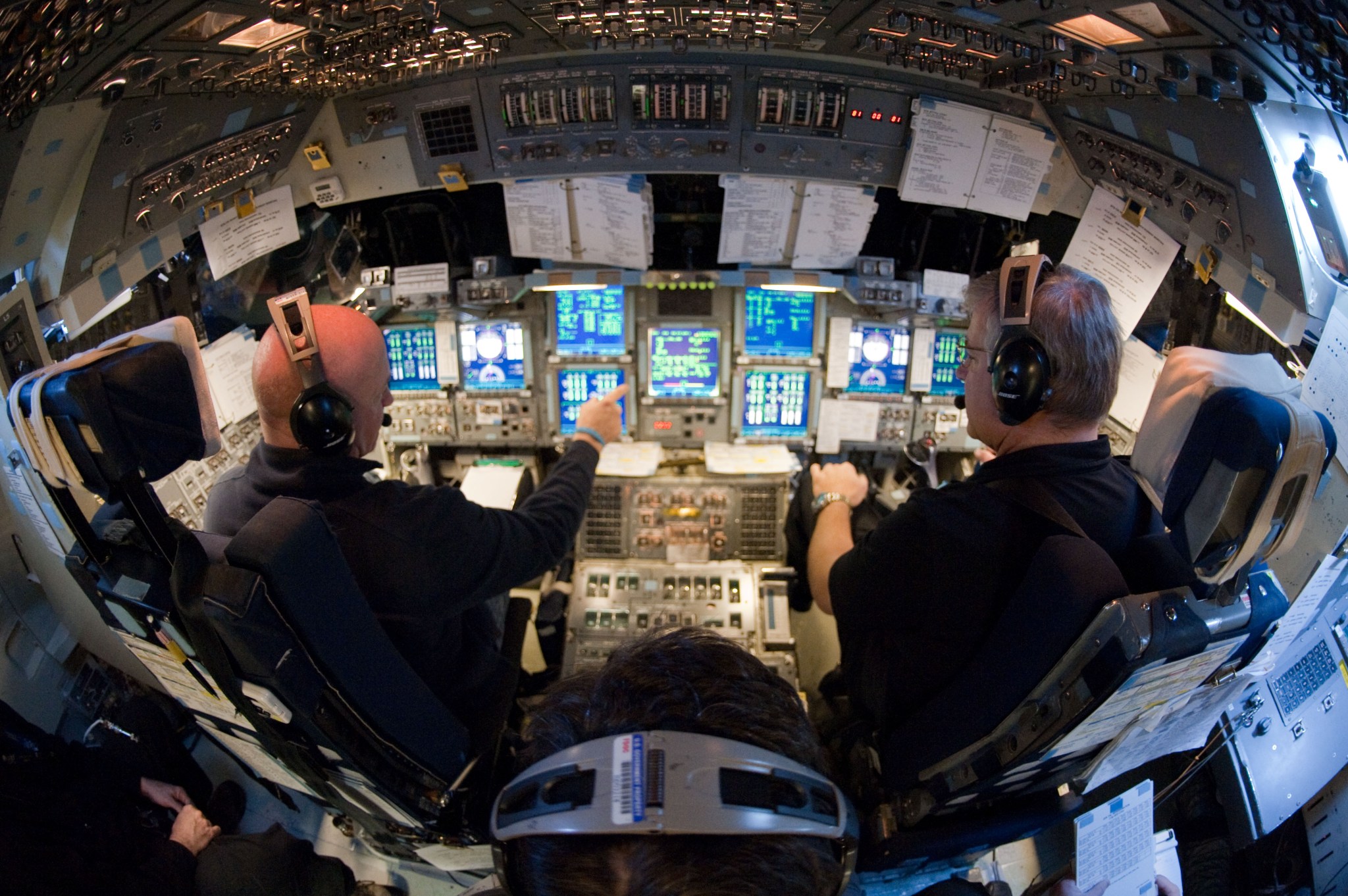
MEDIA ADVISORY: M22-002
NASA, Lone Star Flight Museum Invite Media to Shuttle Simulator Move
NASA and the Lone Star Flight Museum are inviting media to the final move of the Space Shuttle Motion Base Simulator to its new home at the museum, located at Ellington Field. The simulator, which supported space shuttle astronaut training at NASA for 35 years, will become an interactive exhibit at the museum in Houston.
News media may cover the simulator’s move at 10 a.m. CDT Tuesday, April 12, at the Lone Star Flight Museum, 11551 Aerospace Ave. The simulator’s 30-minute journey from NASA hangar 276 is subject to weather conditions; in the event of a delay, an updated schedule will be announced as soon as possible. To participate, media should contact Anna Hawley, the museum’s chief marketing officer, at 346-352-7671 or anna.hawley@lonestarflight.org. All media should meet at the Lone Star Flight Museum for transport to the taxiway.
The museum will open at 10 a.m. and offer free admission to the public from 4-6 p.m. to see the simulator and several exhibit artifacts, such as the trainer’s console and crew procedures. A video from the last simulator run of the STS-135 crew in July 2011 will showcase how the simulator was used to train shuttle crews. Admission is free.
Dr. Bonnie J. Dunbar, retired NASA astronaut and aerospace engineering professor at Texas A&M University, worked alongside a team of volunteers to restore the simulator — a project that involved approximately 5,000 hours.
The Motion Base Simulator was built in 1976 to support the Approach and Landing Tests using the Space Shuttle Enterprise and modified to support the future space shuttle missions. It was first used to support flight crew training for the STS-1 mission on Jan. 9, 1979. The simulator is a full-scale replica of the forward flight deck of a space shuttle orbiter, with windows by display screens that provided increasingly detailed simulated views during various phases of the flight as the shuttle program progressed. The simulator’s motion systems provided a realistic simulation of the space shuttle’s movements.
The simulator, and a companion Fixed Base Simulator, were operated for decades in the Jake Garn Simulation and Training Facility at Johnson to train astronauts for space shuttle missions. The facility, which originally began operations Mission Simulation and Training Facility, supported astronaut training for the Gemini and Apollo Programs, the Apollo-Soyuz Test Project, and the Skylab Programs before undergoing renovations from 1976-1978 to support the Space Shuttle Program.
The shuttle simulators were removed after the final space shuttle mission, STS-135, in 2011 to make room for some of NASA’s next generation of spaceflight training hardware, including the Boeing Starliner, part of NASA’s Commercial Crew Program.
Ellington Field is the heart of Johnson Space Center’s flying operations. NASA’s primary function at Ellington is the training of astronauts for spaceflight. The field is also a base for administrative, cargo transport, and high-altitude aircraft, with many types of NASA aircraft at the hangers.
NASA’s Johnson Space Center is celebrating its 60th anniversary this year. On May 25, 1961, President John F. Kennedy committed the nation to achieve the goal of “landing a man on the moon and returning him safely to the earth” before the end of the decade. NASA’s Space Task Group, in charge of America’s human spaceflight program, was already working on Project Mercury to put astronauts into Earth orbit, but with the additional task of a human lunar landing, it soon outgrew its facilities at NASA’s Langley Research Center in Hampton, Virginia. The agency decided it needed a dedicated field center for human spaceflight, and on Sept. 19, 1961, after evaluating multiple sites around the country, NASA announced that the new Manned Spacecraft Center would be built near Houston, Texas.
Join NASA as it goes forward to the Moon and on to Mars — discover the latest on Earth, the Solar System, and beyond with a weekly update in your inbox. Subscribe at:
Learn more about the Lone Star Flight Museum at:
-end-
Kelly Humphries
Johnson Space Center
281-483-5111
kelly.o.humphries@nasa.gov
Anna Hawley / Laura M. Pennino
Lone Star Flight Museum
281-286-9398 / 346-352-7671
anna.hawley@lonestarflight.org
lp@penninoandpartners.com


























